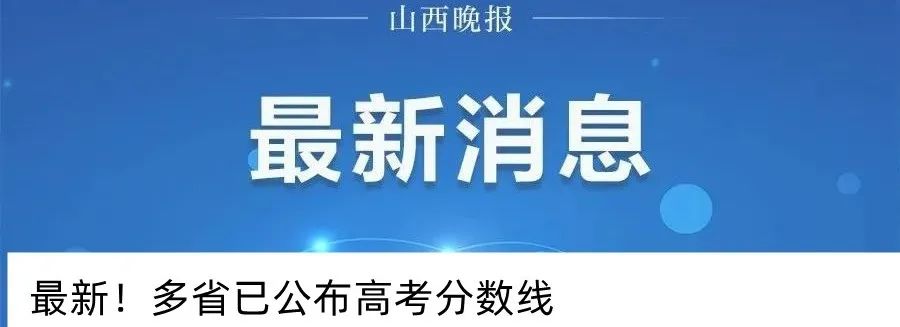The effectiveness and problem of teaching with "English as a medium"
Author:Catti center Time:2022.08.13
Since entering the 21st century, due to the influence of economic globalization, many countries and regions are exploring the path and method of internationalization of education. Some new teaching methods have emerged as the occurrence, including "English as a medium" Of incision, EMI) teaching method. The EMI teaching method refers to a teacher who is not English by mother tongue, students who are not English in the same mother tongue, and teach other discipline courses other than English courses with English. Under this teaching method, English is not teaching content, but the medium and professional knowledge of exchanges. Not only do teachers use all English teaching, but also curriculum design, teaching materials, classroom organization, teaching evaluation, etc. tool.
Development results
The large -scale promotion of EMI teaching methods in foreign universities began in the early 21st century. The teaching practice of various countries has both similarities and different characteristics. Europe is a pioneer and heavy town using EMI teaching methods. In 2014, 28 European non -English countries have begun to adopt EMI teaching methods. The EMI courses (courses taught by EMI teaching methods) have the top European countries in the number of European countries, including the Netherlands, Germany, Sweden, France, and Denmark. Universities in some countries in the Middle East also offer EMI courses. For example, some universities in Saudi Arabia use EMI teaching methods in nursing education courses, which may be related to the country's requesting nurses to receive English training. The Ministry of Literature and Arts of Japan first set up special projects in 2009. It is hoped that through the EMI courses in 30 Japanese universities, it will achieve the goal of attracting 300,000 international students to study in Japan by 2020. Later, in 2014, the "top university" project taught in English to improve the international compatibility and competitiveness of Japanese higher education institutions. Beginning in 2010, the number of EMI courses opened by Korean colleges and universities has increased significantly. At present, the number of courses that use EMI teaching methods accounts for approximately 2.2%of its total courses. According to the situation in the country and regions, courses that use EMI teaching methods mainly involve disciplines of science, work, medicine, law, business, and other disciplines, including information communication, finance, law, international business management, international economic and trade, marketing and other courses.
The EMI teaching method is not only adopted by higher education institutions, but also introduced pre -school education, primary and secondary schools, and teaching activities specialized for specific student groups (such as immigration), but in general, its development speed in higher education institutions is the fastest. Essence This may be related to the following five points. First, in order to enhance the attractiveness of international students and the degree of internationalization of colleges and universities in the country and regions, it will introduce the EMI teaching method as one of the internationalization indicators of the curriculum and teaching model. Essence Second, in some countries, the decline in the admission rate of students in the population structure and the reduction of educational fund investment has brought adverse effects on the running of colleges and universities. Therefore, for practical considerations, EMI courses need to be opened to attract foreign students to obtain additional income and other income to make up for insufficient funding. Third, in some countries and regions, competition between public universities and private universities is fierce, and the introduction of EMI teaching methods has become one of the means for some universities to attract students. According to statistics, more than 50 countries have introduced EMI teaching methods. Although generally speaking, the number of private colleges and universities that introduce EMI teaching methods is basically the same as public universities, but the number of private universities introduced in EMI teaching methods has reached the above -mentioned national private universities. The total amount of total, and the number of public universities introduced into EMI teaching methods only accounts for 78.2%of the total number of public universities. Fourth, students who help mother tongue are non -English -speaking students to gradually adapt to immersive all English environments, laying English as a working language in the future, and improving their employment quality and competitiveness after graduation. Fifth, due to various factors, English is widely used in international business, finance and even academic exchanges and has certain advantages. This also objectively promotes the promotion of EMI teaching methods.
One of the goals of colleges and universities to open EMI courses is to improve students' English level, so that students who are not English in English have the ability to use English as the working language. Therefore, whether students can achieve English language ability through EMI courses are one of the important indicators to measure the effectiveness of EMI courses. Judging from the existing research results, most students who have taken EMI courses have gained different aspects and degrees of improvement in English. For example, a study based on the Arab Emirates University as the background shows that under EMI teaching methods, students have improved their levels of undergraduate learning, English writing, reading, hearing, and oral expression have improved significantly. The biggest progress of students is in terms of spoken English, and the average spoken score has increased by 50%. Another research on graduate students in engineering majors in Spain universities shows that after studying an EMI course (60 hours), students' English listening level has improved significantly.
Inadequate
Today, EMI teaching practice has become one of the remarkable phenomena in the internationalization of education. But by reviewing its teaching status and effectiveness, we can find that there are still some shortcomings and to improve EMI teaching methods.
First of all, EMI teaching methods may adversely affect students in terms of curriculum content understanding. EMI is a practical research -oriented teaching method. The concept is that students should become the center of teaching activities. They also require students' understanding of the content of the curriculum without their mother tongue. For students who are relatively strong in English language, taking EMI courses can achieve dual effects, which not only learned professional knowledge, but also improves English level. But for students with weak English language skills, the situation does not seem to be the case. Professor Galeo Olekyar, a professor at Oslo University in Norwega, conducted a survey of 364 undergraduates and graduate students from Norwegian universities and 47 graduate students from German universities. The level of understanding is lower than the level of understanding of the mother tongue course. The interviewed students believed that this was mainly because they encountered many unfamiliar English vocabulary and fixed expression methods in their studies. This phenomenon is not a case. The research of other scholars also shows that students' comprehensive cognitive level and English language ability have greatly restricted the teaching effect of the EMI course. Students with weak English foundation often focus on the understanding of English vocabulary rather than professional knowledge. Secondly, teachers and students are the main body of teaching activities. Only by stimulating their subjective will can the teaching process be smoother, and the teaching effectiveness of the EMI course can be guaranteed. However, in some foreign universities that have already opened EMI courses, the launch of this move seems to be driven by the "top -down" policy, not the "bottom -up" teaching subject. For example, a research report on the development of the Korean EMI curriculum showed that 52.9%of the interviewed teachers were not voluntary, but to meet the requirements of the school. Some interviewed students said that the courses they wanted to take were only EMI courses, and there was no other choice.
Third, the English teaching ability of the teacher is a prerequisite for the normal development of the EMI curriculum teaching activities, but the relevant research reports show that the teachers who have opened EMI courses also have language ability. For example, some teachers in Italian universities believe that their own English level is not high, and it is difficult for students to teach students in English. If you want to ensure the teaching effect, complete the teaching goals, and explain the knowledge to students in English, teachers have to spend more time and energy to prepare lessons and continue to improve their English level. quantity. In addition, for the "English teaching ability" of teachers, many higher education institutions have not yet formulated a unified identification standard, and there are almost no English training for teachers who specialize in EMI courses. It can be seen that before large -scale promotion of EMI courses, specific and feasible solutions need to be introduced to assist teachers to improve their English level.
In the end, although the current EMI teaching method has been applied to various stages of education, research on related specific teaching strategies has been far behind the promotion speed of EMI teaching methods, which has only attracted the attention of academic circles in recent years. The current research is mostly based on empirical research. It is commonly summarized by teachers' experience in their respective schools and courses. The lack of systematic research and theoretical framework for teaching strategies and the construction of the theoretical framework. In terms of the influence of EMI teaching methods on students' English level, the research methods adopted by researchers and institutions are mostly self -reporting, and they have strong subjectivity. In addition, the study of EMI teaching methods on content learning is relatively insufficient.
Therefore, in order to avoid the adverse effects of the development of EMI courses on higher education on higher education on higher education without sufficient planning and preparation. It is necessary to start from teachers' training and resource allocation to strengthen relevant research and further improve EMI teaching methods.
Source: China Social Science Network-Journal of Social Sciences of China
Author: Zhu Ling
- END -
Why learn medicine?Four medical leaders dialogue with outstanding students

This year's college entrance examination has all ended except Shanghai and Tianjin...
@, 33 units 1137 trainee positions are waiting for you

On June 28, the Provincial Department of Human Resources and Social Security annou...